Bordeaux 2011: tasting notes from barrel
April 30, 2012
Seashell freshness beguiled on occasion – and a return to refreshing wine is welcome. But hard and/or dry tannins detracted. Many fine whites. This vintage should be less expensive, but careful choices required. A mixed bag.

With Marisa d'Vari and John Gilman, enjoying the 2011 Cheval Blanc, one of the best reds from barrel of 2011
Right Bank: Fronsac/Canon Fronsac/Lalande de Pomerol — Saint Emilion (including Grand Cru, Grand Cru Classé and Premiers) — Pomerol
Left Bank: Graves/Pessac Léognan — Haut Medoc — Margaux and Moulis/Listrac/Medoc — St Julien — Pauillac — St Estephe — Haut Medoc
Money matters: reaction from an American merchant (VIDEO JUST BELOW)
Previous posts, such as the tasting notes “posted live” from Château Branaire Ducru, were impromptu. I had since tasted some of the same wines again, at a trade tasting, non blind. As in other vintages, sample variation exists, so please take care when reading my reviews. And for estates that monitor my notes: Please, take it easy… We are talking about barrel samples, after all. I convey honest impressions, based on what I tasted. But proof is in the bottle – and with age in bottle. In any case, I will return to Bordeaux later this year to taste wines again – and those I had missed during en primeur week, such as Latour, Mouton, Cos, and several Pomerols, which I heard did well: l’Evangile, Lafleur and Eglise Clinet, not to mention the Moueix stable.
You can go directly to my notes by clicking on the appellation links above, but a word on how “harlequin” this vintage is. First off, because of the varied weather, grape bunches did not uniformly ripen, so there is a reference to the harlequin costumes during Carnival season in Europe… Nice metaphor which I got from Jean Rene Matignon at Château Pichon Longueville Baron. See video below.
Harlequin in the same sense in that quality varied as well as colors of grapes in bunches. It was rather hard to pick an appellation that did better. Perhaps it is safe to say that dry whites excelled overall better than dry reds. Among the reds, it is more difficult to choose. Were the Pomerols the most homogenous? Certainly Cabernet Franc did well. But Petrus seemed tough as nails: like an old school wine, I bet it will surprise many palates with time in bottle. I had a slightly harder time in Graves and in Margaux than I did in the northern Medoc, which seemed to do best in the sweet spot of St Julien and Pauillac, but throughout there were variations in quality. Perhaps my favorite all around Left Banker, taking price into account, is Calon Segur in St Estephe. But even many of the better wines – soft and elegant and fine mid palate presence – were marked by some “toughish” tannin on the finish. The worst had excessive dryness. It seems this was hardly a vintage where grape pips ripened well, so the key was not to extract too much from the pips, but rather from the skins.
GRAVES and PESSAC LEOGNAN / 5 April 2012
Just as in 2008, it seems to me that the whites from Gravesand Pessac Leognan did better, overall, than the reds. Certainly this was clear to me when I tasted at Château Haut Brion, whose reds were not stars of the vintage, such as, say, Vieux Château Certan or Calon Segur. On the other hand, tasting some 2008s today from the region – as I had in a vertical at Domaine de Chevalier – many 2008s are tasting better from bottle. And in 2011, at least there was more freshness when compared to 2010 and especially 2009 in some cases. Certainly La Mission seemed more appealing to me in 2011 on some levels than it did in 2010, with its monstrous alcohol level last year. Most of the wines below were tasted blind, on the morning of Thursday 5 April at Château Malartic Lagraviere (photo above). The wines of Haut Brion and La Mission Haut Brion, also tasted that day in the afternoon, were not tasted blind.
In the video below, with Jessica Harnois, we briefly discuss the variable nature of 2011 Bordeaux, and conclude that the whites were on balance, superior.
At Malartic Lagraviere 10 to 12 noon, 5 April, 2012
Reds – flights of six.
19. Dark red fruit. Medium bodied. Decent palate presence. Subtle tonicity paired with fruit, but a bit drying on the finish. Finesse nose after glass is emptied. 87-89+ Château Oliver Pessac Léognan
18. More fruit than mineral. More immediate ripe fruit on the mid palate, if some austerity on the end palate. Richness on the nose here, after glass emptied, but I worry about the drying aspects on the finish. 87-89 Château Bouscaut Pessac Léognan
17. Lighter color than most. Deeper red fruit here, some licorice from oak? But fine. There is quite a bit of sap on the mid palate, juiciness, albeit some drying on the finish, yet again. Some oak evidence on the nose after glass emptied. OK in the end. 88-90+ Château Carbonnieux Pessac Léognan
16. More subtle nose here, with underlying substance. Rather dark hue. Cherry tones. Pleasing tonicity and elegance throughout. This has the most juiciness so far, and yet also communicates substance. A refined albeit somewhat restrained – for now – expression of Graves, which does not dry on the finish. 91-93+ Château Haut Bailly Pessac Léognan
15. Red fruit aroma here. Fruit basket like. More pronounced tannin, but polite on the mid palate, more noticeable on the finish. But not hard. A smooth finish, and a nice job coming from a not so expensive estate! 89-91 Château Rahoul Graves
14. Most expressive nose so far, pure and deep, almost some sweetness on the nose. There is a nice mix of ripe fruit and tannic grip, tightens on the finish, but not too edgy. Graves smoothness in fact, if not quite as pronounced on the finish as the preceding wine, but that should fill out in barrel. A strong performance from an often underrated wine! 90-92 Château La Louvière Pessac Léognan
13. Dark fruit on the nose, with just a touch of green it seems. Manageable tannins on the palate, which has a pleasing sweetish character in the middle, just enough richness to make you happy, but a touch drying out on the finish, alas. 87-89 Château Ferrande Graves
12. Fresher and sweeter fruit on the nose. Palate has a certain dignity if, for now, a bit impenetrable. Tannins seem to mask red fruit for the moment, albeit just a slight hollowness to the mid palate, but the tonic finish reassures. Barrel aging should “fill it out”. Château Les Carmes Haut Brion Pessac Léognan 88-91
11. More red than black licorice on the nose. Some interesting tea notes. Palate is nuanced, with freshness and fresh red fruit. This has real delicacy in the context of the vintage. Bravo – and bravo for the quality/price ratio! Château Picque Caillou Pessac Léognan 90-92
10. Oak dominates here… an oak that is strong toast. The palate is quite “full on”, with concentrated fruit, but it seems to dry a bit on the finish. Not my style, but score higher if you like bigger Graves with some evident oak-derived tannins. Château de Fieuzal Pessac Léognan 86-88
9. Red fruit expression on the nose. Palate opens softly and smoothly, even rather delicately, but turns tea-like tannic, with a light – but firm – finish. The overall feeling is of nuance, that needs time in barrel. Tasted also at a vertical at the estate on Monday, and it was very good. In fact, wine writer Stephen Brook and I both confused it for the 2010! Domaine de Chevalier Pessac Léognan 90-93
8. Faulty sample because off aromas. Need to try again. Château de France Pessac Léognan
7. Pureness and depth of fruit on the nose. Attack is almost chocolate like through to the mid palate, and there is civility about the tannins. Although a touch drying on the finish, this wine is successful because of evident balance. This is likely to be a fine deal, too, so nice job! Château Larrivet Haut Brion Pessac Léognan 89-92
6. Rich nose, quite flavorful spice and plum. Good palate presence, more so than wine number 5, even if the tannin kicks in to almost drying. Give it time in barrel… Château Malartic Lagraviere Pessac Léognan 89-91
5. More noticeable tannin than fruit. Palate has just enough sap, although there is austerity through to the finish. Somewhat ho-hum. Château de Chantegrive Graves 87-89
4. Fresh mentholated nose, bit of chocolate. Attack is supple, with a medium weighted mid palate, and a light, yet flavorful finish. Quite pleasing overall! Château Smith Haut Lafitte Pessac Léognan 89-92
3. Darker fruit and more glycerin than wine number 4, quite a bit of sap and decent energy, too. Tannins, somewhat drying, kick in on the finish, but this shows promise. Château Pape Clément Pessac Léognan 89-91+
2. Light plum aroma. Somewhat choppy texture with noticeable tannins, a touch clumsy, and ending on a slightly hard note. This is not too bad, but somewhat out of place. Check back after barrel aging. Château Latour Martillac Pessac Léognan 88-90?
1. A rather barely ripe plum aroma albeit some interesting mineral aspects. Palate lacks core of fruit for the mid palate especially, with a certain stolid quality overall. An awkward moment? Hope that barrel will fill it out. Château Haut Bergey Pessac Léognan 87-89
Right Bank: Fronsac/Canon Fronsac/Lalande de Pomerol — Saint Emilion (including Grand Cru, Grand Cru Classé and Premiers) — Pomerol
Left Bank: Graves/Pessac Léognan — Haut Medoc — Margaux and Moulis/Listrac/Medoc — St Julien — Pauillac — St Estephe — Haut Medoc
Whites – I had some high hopes….which more or less fullfilled, although not as homogenous for me as some other tasters believed. Flights of three. In the end, the whites prove more successful than the reds overall.
1. Nice lime and briny aromas. The palate is quite refined, with subtle lemon meringue richness and fine salinity. Pleasure on the mid palate to be sure, if perhaps just a tad warm on the finish, but overall, this is excellent white Graves. 90-92+ Make it a two-for-two for this fine estate! Château La Louviere
2. Citrus and white fruit, ripe pear and white apricot. The palate could use a bit more verve however. Not sure if that is due to oak, but the nose seemed to promise more. Give it time… a relative disappointment for the terroir and reputation of this great estate. 89-91 Château Pape Clément
3. Rather juicy pear aromas, upon aeration. Palate is fresh, certainly, with sap, conjuring images of a summer party aperitif, but a touch monotone. 87-88+ Château Ferrande
4. Nuanced rather wintergreen mineral notes, with fresh fruit. The palate is juicy and fresh, with integrated oak influences, quite rounded. Just a touch abrupt on the finish, but very fresh and, given the aromas and palate textures, it should get better once in bottle. 89-92+ Château Larrivet Haut Brion
5. Notes of reduction here… The palate has substance and weight, and freshness, but needs oxygen. Reduced, hard to taste. An imperfect sample from this estate, again in white. Château de France
6. Apricot notes, yellow, but a touch closed. Soft attack with a somewhat soft mid palate, although the finish is marked by saline freshness. Not bad, could use more precision. 88-91 Château Malartic Lagraviere
7. Fine mineral nose, lime like. Brisk attack, if a touch out of focus on the mid palate. Still a refreshing finish. Château Rahoul 88-90
8. Another interesting nose; stony aspects and a touch of charcoal. Fine attack and better mid palate presence than the above, with red apple and citrus. Long finish, fine. Easily the best of this trio. Château Bouscaut 90-92+
9. Fresh iodine. Briny. I think of oysters. Could it use just a bit more fruit? The pleasure is there, and I want oysters with this, and I like the mid palate, but a touch abrupt on the finish. Château de Fieuzal 88-91
10. Sweet apricot with some oak derived licorice? Fine freshness, roundness on the palate… The finish is marked by light iodine, but flattens out a touch. This leaves me with more questions. Château Picque Caillou 88-91
11. Impressive depth on the nose, a touch impenetrable, but marked by spearmint and white fruit, aromatically. The palate is stricter, almost tightly wound, with a mentholated – and lingering – quality. Intriguing, as it seems to pack punch that seems coiled up. The echoing finish suggests something quite special indeed. Domaine de Chevalier 92-95
12. Nose is quite fruity, more diffuse. Here there is a “liberation” on the palate, after the tightly wound 11… this wine seems rather open knit, but expressive and fruit-forward, and with iodine and salinity. Could it use more precision? Aging should help. Château Smith Haut Lafitte. Interesting, I had a similar reaction to this wine after tasting Domaine de Chevalier white, at a trade tasting Monday at Barriere Frères, just before tasting the Smith Haut Lafitte: the blind tasting confirms the non blind tasting… 90-92
13. Almost gunflint, charcoal on the nose. Bright palate with rather candied freshness, which reminded me initially of cotton candy at a summer amusement park – that does sound funny, no? The finish is a touch warm, but lots of fun overall. Château Haut Bergey 89-91+
14. Notes of sulfur, here, reduction. Hard to taste this sample… Note reserved. Château de Chantegrive
15. White pear and apricot, very complex nose, with iodine and melon and white pepper. Followed through on the fresh palate, rich in the middle, and offers a lingering, bright, finish. Lovely – a special wine. Château Carbonnieux. This is one of the most impressive Carbonnieux I have had, ever en primeur. Superb. 91-94
16. More citrus-focused (grapefruit, lemon) than the above, not as complex, and perhaps less nuanced on the nose at this stage, but this wine packs perhaps more weight – also juicy and fresh – through to a fine finish. This stands tall, lots going on here. Château Latour Martillac 91-94
17. Intriguingly floral aspects here with orange rind. A magnificent nose. The palate is on the richer side, but fine precision overall, also with weight and much interest, through to the finish. A very fine wine. Château Oliver 90-94
At Château Haut Brion with Jean-Philippe Delmas
Château La Mission Haut Brion. Tasted with Mark Golodetz, who liked this, and John Gilman, who did not so much. My opinion? Somewhere in between. Like Mark, I really appreciated the rather fruity and juicy mid palate, preceded by a pleasingly ripe aroma of dark fruit and notes of fine chocolate. Like John however, I also did not appreciate noticeably drying tannins on the finish. A second sample seemed fresher but still with dry notes on the finish. On the plus side as well, however: 13.5% alcohol and a pH of 3.63; certainly not as hard and alcoholic as the 2010. Blend is more Cabernet focused, with 55% CS, 11.3% CF and 33.7% Merlot. Only 44% of the harvest was used for this first wine. 89-92?
Château Haut Brion. I preferred the nose here, as much as the LMHB was seductive. Here more seashell freshness, with graphite, pre-tobacco like notions, carried through to the palate, which opens brisk and and tannic, with some drying as well. I wonder if the 70% new oak was a touch too much, whether 50% would have been better, as both John and I noted the oak derivation, however slight. Again, a Cabernet focus, with 46.3% CS, almost 20% CF and the rest Merlot. The lower alcohol this year was again welcome, at 13.2% with a pH of 3.61. Only 43% of the harvest used to make the grand vin. While good, it did not wow me this year. But it is Haut Brion, and sometimes a wine that is underestimated from barrel, so give it time to come together, and see what happens! 90-92+
The stars of this tasting were white…
La Clarté de Haut Brion. This is the second wine, a combined second white wine, in fact, of what was not used for either the Blanc of LMHB (what used to be called Laville Haut Brion) or the Haut Brion. As such it was darn good, with a brisk attack – accentuating the 22% Sauvignon Blanc – and a rather floral like aspect on the nose and palate. As brisk and as fresh as it was initially, it yielded to a somewhat softer mid-palate marked by white fruits, telltale Sémillon derivations, the rest of the blend, and to a lingering finish. Very enjoyable, but not as focused as either of the next two, predictably. 89-93
Château La Mission Haut Brion Blanc. Far more focus here. Very impressive, with juicy notions of white and yellow fruits, including apricot (both yellow and white) and peach. The high alcohol – 14.6%! – was amazingly well integrated, but the low pH, 3.27, certainly helped balance things. Only 46% of the harvest went into this wine, which, like the above, is dominated by Semillon at 72.9% and the rest Sauvignon Blanc. I liked this, but the next one was better… 90-93+
Château Haut Brion Blanc. Early picking for the whites, because of the overall dry season, starting on … 18 August! You would have thought it were 2003, but 2011 was not overhot. The result is a lovely and brisk and fresh attack, highlighted by super fine notions of ripe pear, far more elegant than the above, with tremendous focus and a long finish. Slightly lower alcohol, 14.4% and lower pH at 3.22, no doubt added to the notion of greater freshness, as did more of the energetic variety Sauvignon Blanc (42.1%) in the blend, with the rest being Semillon. One of the wines of the vintage, easily. 93-95+
Right Bank: Fronsac/Canon Fronsac/Lalande de Pomerol — Saint Emilion (including Grand Cru, Grand Cru Classé and Premiers) — Pomerol
Left Bank: Graves/Pessac Léognan — Haut Medoc — Margaux and Moulis/Listrac/Medoc — St Julien — Pauillac — St Estephe — Haut Medoc
PAUILLAC – Many relative stars here, but Pontet Canet shined very bright
What can I say? I have been sometimes underwhelmed by somewhat “over intense” richness of Pontet Canet in some vintages, but in 2011, this impressive estate managed to craft a wine with iodine freshness and purity of fruit, plus underlying Pauillac power. This, in a vintage often marked by hard and/or drying tannins, none of which appeared in Pontet Canet, making it one of the wines of the year. Of course Lafite Rothschild was impressive. But in a classical, backward sort of way, with some austere tannin on the finish. The 2009 and 2010 were noticeably more impressive in that sense, although the aromatics of the 2011 are excellent. Of the three first growths I did try (Haut Brion and Margaux were the others), Lafite Rothschild is my favorite. Several other noteworthy performances included the best Lynch Moussas I recall ever trying en primeur, particularly fresh and tasty. Grand Puy Lacoste and Pichon Longueville Comtesse de Lalande put in fine showings, as did Pichon Baron. So did Batailley. Many of the Pauillacs I tried were quite impressive. But Pontet Canet seemed to wow me the most this year.
Château Pontet Canet. Visited the estate on Tuesday 3 April. Director Jean Michel Comme was not very wordy, but I guess you could say he was quiet in his confidence. Interesting note: less Cabernet in the blend as usual, because the Merlot was “a bit more productive,” Comme remarked. So, 60% Cabernet Sauvignon, 35% Merlot and the rest CF and PV. Picking occurred rapidly – for reasons already stated in my vintage report – from 15 to 29 September. Comme says that the 2010 is the best vintage of Pontet Canet in a long time, but categorizes the 2011 as “more accessible and agreeable”. One could say that, but there real freshness to this wine – on the nose and palate – and subtle quality overall, with a lingering finish. Extraction seems perfectly handled. A great success for 2011! 92-95
Château Lafite Rothschild. Also tasted on 3 April, there were security guards at the estate, which bore some resemblance to Fort Knox. Bottle prices are such, that this was entering a gold bank… After tasting a fine Carruades, with a discrete red fruit aromatic profile, a rather soft and juicy palate, ending with somewhat drying tannins however, I was very impressed by the deep graphite aromatics of this premier cru. The attack was impressive, as was a voluminous mid palate, but the finish was rather hard and somewhat gum staining. Not drying, mind you – there is a difference. Could it be because of the decision to rush the harvest of Cabernet (80% of the blend, the rest Merlot) two days early because of a hail storm? Much of the Cabs were picked on 3 September, as opposed to the planned 5 September date, then more from 13-21 September. The lurking threat of botrytis meant that pickers had to act fast, as was the case elsewhere in Bordeaux. I like the beguiling aroma and texture, on the mid palate, that sets this out as a first growth. But the finish is quite foreboding. Certainly barrel aging – and subsequent aging in bottle – will make this rounder and more elegant, but, for now, I would not go too far with barrel sample praise. 91-94
Château Duhart Milon. Well, well. This was another wonderful surprise from Pauillac in 2011, also tasted at Lafite. While not exuding quite the depth and subtlety of Pontet Canet, this wine was fresh and juicy, with a lovely expression of cassis flavors and aromas. The price will probably be outrageous, alas, but this is a wine that counts among the top tier from 2011. 9o-92+
Château Pichon Longueville Baron. A fine effort, tasted both at the chateau and at the trade tasting at Chateau Lagrange. Same levels of polyphenols as in 2009, director Jean Rene Matignon said. He told me that is was a “harlequin harvest”, given the different colored grapes within bunches. “We had to pick quickly, fear of botrytis coming from humid weather in September,” he remarked – echoing similar comments I had heard, from Brane Cantenac to Lafite Rothschild. 82% Cabernet and the rest Merlot. The attack was brisk, with red fruit and cassis aromas and flavors, a full bodied mid palate, but then somewhat hard tannin on the finish. Good freshness and corpulence overall, but lacking that dimension of grandeur from, say, 2005 or 2009 (similar to Montrose in this sense) and depth from the 2010. 90-93
Château Pibran. Also tasted at Chateau Pichon Baron. Fine success here, a cru bourgeois that is very fresh and thirst quenching, with excellent fruit expressions. The majority Merlot seemed to lend softness, not bad at all. 89-91+
Tasted blind at Chateau Branaire Ducru, 4 April, and, when noted, at Chateau Lagrange, trade tasting on 5 April.
Château Grand Puy Lacoste. Somewhat floral … and fine fruit on the nose. Palate is tonic and ripe, and substantial, if a touch nervy and bracing on to the finish. This has promise, as the barrel aging will tone down the tannic edge and add body and softness. Nicely done, indeed, Tasted again at trade tasting, just after neighbor and fellow 5th growth Lynch Bages, and the juice and freshness of the GPL was superior. Fine job! 91-93+
Rather pleased with the Northern Medoc: video following tastings of Pauillacs, St Juliens and St Estephes
Château Lynch Bages. What happened? Ripe nose here. Fresh, on the nose. But the palate is marked by oak tannin, that seems too pronounced, at this early stage for me… Confirmed at trade tasting. Disappointingly extracted. Cross your fingers. 88-89
Château Clerc Milon. Certain ripe cassis on the nose, with a rather supple attack and a cranberry-like freshness. The body is there, but not very expressive, with a somewhat pinched finish. Tasted better at the trade tasting, more substantial, but still a touch monotone. Time in barrel will improve this. 89-91+
Château Pichon Longueville Comtesse de Lalande. Fine aromatics, floral even. The palate exudes cranberry freshness, albeit a somewhat choppy finish, after a very substantial mid palate. Give it time to fill out in barrel. At trade tasting, seemed more “together”, really seems to have potential for a high score after barrel aging, with excellent texture – and palate presence. 90-93
Château Croizet Bages. A bit jammy? This wine had an almost thick aspect, and yet some bracing acidity that gives it zing… and it tasted better at the trade tasting. Fine lift on the finish, and time in barrel should soften any edginess. Cross your fingers, but not bad, at all, for this regular underperformer. 89-91+
Château Grand Puy Ducasse. Chocolate richness on the nose. The attack is, at first, supple but then there is tannic austerity, enough of which to make me worry about the fruit not matching it over time. 88-89
Château Haut Bages Libéral. Somewhat drier here on the nose, marked by a certain oak derivation? Cranberry. Again, here we have tannic tightness on the palate… perhaps slightly juicier than the above, but not the strongest showing from this fine estate. 88-89+
Château Lynch Moussas. Pure fruit here. Here we have sève (juiciness) on the mid palate, and really impressive. Tasted again after the unveiling, and it was just as good. I would have liked to have re-tasted at a trade tasting, but it was not there! Quite surprising, given the often under-performing nature of this château… Let’s see from bottle. 90-93
Château Batailley. Fine fresh fruit. Good salt on the palate, freshness, and a thirst-quenching aspect. Will barrel aging fill it out more? Does not quite reach the suaveness of, say, GPL, or the deep elegance of Pichon Comtese, but it is one of the better Pauillacs in 2011. Similar result at trade tasting, crisp and full, even some chocolate notes. Impressive. 89-92+
Château d’Armailhac. Darker fruit nose, mingled with a touch of oak derivation. The attack brings that as well, but it gets better on the mid-palate, broad and rich midway, with enough freshness coming from the acidity. This may turn out quite good. 89-92+
Right Bank: Fronsac/Canon Fronsac/Lalande de Pomerol — Saint Emilion (including Grand Cru, Grand Cru Classé and Premiers) — Pomerol
Left Bank: Graves/Pessac Léognan — Haut Medoc — Margaux and Moulis/Listrac/Medoc — St Julien — Pauillac — St Estephe — Haut Medoc
Some gems, including a towering Yquem, some minor flubs – but quite nice overall
White wines excelled in 2011, and that includes the sweet whites of Bordeaux. Now, I did not taste appellations like Saint Croix du Mont or Monbazillac. We only had a week. But I also missed out on two key estates: Raymond Lafon and Climens… reason enough to return to Bordeaux, and soon. For the Sauternes and Barsac I did taste, Yquem was superb and stands alone, quite clearly. Among the others, was it more a Barsac vintage? Perhaps. I generally liked the Barsac wines more, but it is not so cut and dry. Read on…
Château d’Yquem. First tasted in Bordeaux on Wednesday evening at a fancy to-do organized by LVMH. The appetizers were prepared by a famous chef, and they were astoundingly good, from lobster to foie gras. We also had the 1997 to drink after tasting (and, honestly, drinking) the 2011. Yes, drinking it. The 2011 far overshadows the 1997 because it has far more verve and energy. The seashell freshness of 2011 served Sauternes particularly well. Paired with fine botrytis spice and expected richness? A recipe for likely wine of the vintage candidate. For such a prenatal Sauternes, the aromas were already very promising, ranging from fresh, iodine and salt, by way of white apricot and a basket of summer fruit, to botrytis-derived spice aromas including nutmeg and black tea. The attack was brisk, before the mid palate is treated to opulent textures, fairly enveloping your senses. Why is this so good?
Well, the dry weather conditions permitted precocious ripening and when rains fell at the end of August, and again at the beginning of September, the fear for botrytis in red wine vineyards was matched by the joy of botrytis in Sauternes… which explains sometimes why a great Sauternes vintage is, ahem, not so great for red wine! 2011 is a classic example. Picking started on 6-7 September, one of the earliest ever at Yquem. Picking is paused the weekend of 17 September, to obtain a bit more richness in the next round, after some more rain fell, too… But the estate does not want too much sugar either. Two more pickings occur on 21-23 and 25-28 September, resulting in 13.8 alcohol and 144 grams of residual sugar and 4 grams of acidity per liter. Never mind all the numbers, the sample, at least, was fantastic. Wine of the vintage? 95-97+
Sauternes and Barsac tasted blind, at Château Coutet, 2 April – with some tasted again, non blind, on 4 April, at the trade tasting at Château Kirwan. In his annual harvest report, Denis Duburdieu calls 2011 an exceptional vintage for the sweet wines. Based on my tastings, I would say that it is rather good to excellent. Some wines showed too much softness. But what makes it special is a certain verve and freshness in the better samples that, when successfully paired with nuanced richness, yielded fascinating tastings.
First flight
- Château Lamothe Guignard. Pleasant pineapple notes, but slightly one dimensional. Certainly pleasing. Fruity actually. Clean. Darker color than most. Lacks nuance, although has freshness. 88-90
- Château Lamothe. A touch damp on the nose. Musty. Is this a sample issue? But what nice fruit expression on the palate. Is it just a touch cloying? Least pleasing of this flight. Mid palate is good, pineapple but not canned. 87-89
- Château Romer. Lightest color of this flight. Apricot and hint of ripe grapefruit. Rather thick textured. Not cloying but … thick. And the finish is lingering. Touch acidity that seems disjointed? 87-89
- Château de Malle. Slight reduction on the nose. A bit warm here on the finish, although there is crackly fruit on the attack that makes it pleasurable and interesting. 88-90+
- Château Suau. Interesting nose of mineral and fruit. Black tea. Palate is quite unctuous. But also nice fruit. Bright finish. Impressive for a lesser known estate! 90-92
Second flight
- Château Caillou. Again pineapple aspect, a touch one dimensional. Palate has verve with some green tea. Nice. 88-90
- Château Nairac. Closed nose. Reduction? More botrytis on the aroma. Nice wintergreen and mint on the palate. Is it just a touch sharp? Not really! This is interesting. Tasted again at Chateau Kirwan trade tasting, and was impressed, but could it use more nuance? 89-92
- Château Broustet. Somewhat generic nose, but the palate (and nose) is pleasing overall. Has substance on the palate but a bit stolid and slightly warm… there is flavor though. 88-89?
- Château Filhot. Some people really liked this, this year. Based on my sample, this has canned fruit elements. Reach for the water. Should try again. Note reserved.
- Château d’Arche. Lovely beeswax aroma, white pear, lovely creamy palate. Tasted again at Chateau Kirwan, and – while good – it was not as layered or as fresh, in particular, as some of the better wines, but a solid performance. 89-91+
Third flight
- Château Doisy Vedrines. Smoked nose, with peach and citrus. A lovely nose. Palate has sap and refinement. Tea notes, with a tonic finish. Lovely. Note confirmed at Chateau Kirwan tasting, displaying a crackling green apple aspect with subtle sweetness. Excellent 92-94
- Château Doisy Daene. Bright candied fruit with orange rind aspects. The palate is bright and energetic. White pepper on the smooth, lingering and lively finish. Lovely! 92-95
- Château de Myrat. Darkest color. Bright berry notes. Palate is slightly over acidic overall. Rather disjointed? I feel the acidity more than most, needs time to come together. Confirmed at the Kirwan trade tasting. May well merit a higher score. 88-89+
- Château Bastor Lamontagne. Smoky nose, some mineral. Palate is somewhat cloying although the finish is tonic. A metaphor for the strange growing season? 87-89
- Château de Fargues. Cloying pineapple on the nose. The palate is rather simple. And slightly warm on the finish, to boot. Ouch, that was my blind tasting note. While not quite as harsh at the Kirwan trade tasting, when I tasted it again, I have to say that, for its terroir and breed, it compares poorly to wines like Doisy Daene or Doisy Vedrines, which have far better freshness… 87-89?
Fourth flight
- Château Sigalas Rabaud. A bit monolithic, if rich. Rich texture on the palate however, if a touch sugary. Not sure this is the most balanced Sauternes I have had. 87-89?
- Château Rabaud Promis. Sweet yellow apricot on the nose. Palate follows through, but as my neighbor Izak noted, some of these wines could use more zing. This one is just a touch flat, but not too bad. 88-90+
- Château Rieussec. White pepper and ginger. Interesting. Here we have a real minty aspect, with a far better follow up on the palate, which has verve, as compared to the next wine. Very nice! Confirmed at the Kirwan trade tasting. 91-94
- Château Guiraud. Blind tasting showed a peppermint nose, and follows through on a peppery palate. Lacked a bit of verve… but has flavor. Much better sample at the Kirwan tasting. Because of conflicting impressions, note reserved.
- Château Coutet. Floral, intensely so! Delicate on the nose and on the palate, with just enough acidity to back up the richness, which is not excessive. This must be a Barsac. Lovely. At the trade tasting, Christian Valk, a German buyer and friend, told me that this was his “benchmark” sweetie for the rest. Why not? This year, superb Coutet. 92-95
Fifth flight
- Château Suduiraut. Pleasing tobacco like notes, nice mineral aspect. Could it use with just a bit more acidity? Yes. But it still has lots of botrytis spice and flavor. 90-91+
- Château Rayne Vigneau. More candied fruit, and the palate has energy. A salty freshness to this that is very appealing. 90-93
- Clos Haut Peyraguey. Melange of mineral and fruit? Reduction. Palate is a bit broad… lacks verve. Not as interesting as the next two, but conveys some fruit. The sample at the trade tasting was better however. Note reserved.
- Château Lafaurie Peyraguey. Spicy botrytis nose, cinnamon and ginger, with orange. Palate is a touch flat however… Nose promises more than the palate delivers. Could use more acidity, but there is a persistence on the finish 89-91
- Château La Tour Blanche. Pear and spice, a bit heady on the nose. Attack is broad and flattens out somewhat on mid palate, but leaves a fine impression. I could have enjoyed a bit more verve! 88-91
Right Bank: Fronsac/Canon Fronsac/Lalande de Pomerol — Saint Emilion (including Grand Cru, Grand Cru Classé and Premiers) — Pomerol
Left Bank: Graves/Pessac Léognan — Haut Medoc — Margaux and Moulis/Listrac/Medoc — St Julien — Pauillac — St Estephe — Haut Medoc
SAINT ESTEPHE : I left my heart at Calon Segur
Most of the Northern Medocs – 35 in all – I tasted blind on 4 April at Chateau Branaire Ducru, in Group 5 of the UGCG journalists. The exuberance with which I had tasted these wines blind subsided just a bit, when tasted non blind at Chateau Lagrange the next day at a trade tasting. However, impressions for some that I liked (and some that I liked less) were more or less confirmed at the trade tasting. As you can read for Pauillac and St Julien, the Northern Medoc included some of the finest red wine samples of 2011.
Among the Saint Estephes, Calon Segur remains the most impressive, although Montrose is noteworthy, very classical – and more expensive… Vincent Millet of Calon Segur told me that they had not suffered from hail and that their yields were rather high, about 42 hectoliters per hectare. Quite high for the 2011 vintage, considering that a wine like Chateau Palmer in Margaux had barely half those yields, to take one example. Montrose? Closer to 35 hectoliters per hectare. Another advantage in St Estephe, according to Millet, were that the colder clays kept the subsoil more humid than the gravels during much of the arid growing season, so that Cabernets grown on clay actually were able to mature better… because they did not suffer as much from the dry conditions. I did not taste Cos d’Estournel, but plan to visit and taste later this year, so stay tuned for updates.
Chateau Calon Segur is a wine to purchase in 2011. 13.3% alcohol, with fine acidity, the wine is made with 78% Cabernet Sauvignon, 20% Merlot and 2% Petit Verdot. Tasted at the estate on 3 April with Vincent Millet. Aging in 100% new oak, I was amazed how the sample exuded both freshness and sap. No drying tannins, perhaps a touch of tonic austerity on the finish – we are not in 2009 in any case – but very impressively medium-plus bodied. I preferred tasting this at this stage to the 2010 at the same stage last year. Perhaps the 2010 will last longer? But the 2011 has far more charm. 92-95+
Chateau Montrose contains 63% Cabernet Sauvignon, less than what it had in previous years, with 12% Cabernet Franc however, which seems to have been a very successful grape across Bordeaux in 2011. What I liked about both Montrose and the Dame (although the Dame had 72% Merlot) was the pronounced iodine like saltiness, very fresh and brisk overall. There is an underlying power to Montrose that is heavier than Calon, reflecting its 2nd growth breed no doubt, but somewhat austere tannins on the finish remind me of the very tannic 2010. This is a wine that is built for aging, but has less impressive force than the 2010, and certainly far less charm and velvet than the 2009, which is a superb Montrose… I still give it a red bold because barrel age will soften this well, and there is no oak dryness. According to cellar master Laurent Savovitch-Vuk, the Merlots at Montrose were not particularly successful in 2011, rather dilute, given the humid and wet summer and then the rains beginning in September. But those rains helped the Cabernets freshen up, which were – inversely – concentrated with thicker skins. He underscored the effect of the burning heat in late June: “about one bunch per vine was burned,” he said. 92-93+
Chateau Capbern Gasqueton. Also tasted at Calon Segur. A lesser-known estate but made with similar meticulousness, with vats reflecting the various parcels, this is a tip to purchase as well, because it will not be as expensive as in 2009, when it was also delicious… Similar blend to Calon Segur (74% Cabs and the rest Merlot, with 13.2 alcohol and 3.75 pH), this sample exhibits iodine freshness, excellent ripeness and much freshness. Why is this squarely in the 90s? Because it is juicy and no drying aspects. Bravo! 89-92
Chateau Lafon Rochet Tasted blind at Chateau Branaire Ducru, this displayed fine aromatics, a smooth attack with a soft mid palate. Fine substance and smooth tannins. Appealing, if not quite as nuanced and fresh as some of the Pauillacs later on in the blind tasting. Tasted again at a trade tasting, perhaps the best of the St Estephes there, if somewhat austere on the finish. 90-92
Chateau Phelan Segur . Slightly dumber nose. Here we have a more substantial palate, which is promising. Just a touch hard on the finish, however, compared to the preceding wine, tasted blind. Lacks some richness of fruit. Confirmed at trade tasting, a bit tough. 88-90?
Chateau Cos Labory. Bit more oak derivation? Good fruit on the attack, with fine core of brightness on the mid palate. The palate does seem to have more evident oaky tannins, however, some drying, too… on the finish. Need to re-tasted, because this estate is not known for over oaking. Judgment reserved.
Chateau de Pez. Darker, black-toned fruit. This is quite rich on the mid palate, and seems to have ripe black fruit. Some tannic austerity towards the finish, but not really drying. With barrel age, should develop nicely. Tasted just after Pichon Comtesse at the trade tasting, where it seemed harder by comparison. so not really fair. I think this is one of the better St Estephes overall. 89-91
Chateau Les Ormes de Pez. More subtle, not as “evident” on the nose here. Actually with time in glass, it gets more focused, a ripe fruit focus. Though a touch austere, there is pleasing seashell freshness, too, and enough fruit to make barrel aging work well here. I suspect. 90-92
Right Bank: Fronsac/Canon Fronsac/Lalande de Pomerol — Saint Emilion (including Grand Cru, Grand Cru Classé and Premiers) — Pomerol
Left Bank: Graves/Pessac Léognan — Haut Medoc — Margaux and Moulis/Listrac/Medoc — St Julien — Pauillac — St Estephe — Haut Medoc
POMEROL – Some gaps, but from what I did taste, Vieux Château Certan rules the roost
It is tempting to say that Pomerol was the most homogenous of the red wine appellations tasted. Why? First off, it was the most successful appellation at the rather difficult Cercle Rive Droite tasting on Sunday 1 April. Second, it seemed to have some of the juiciest wines. Third, it is what I often heard from other tasters. Then again, I did not taste the Moueix stable, something I need to do in a subsequent visit. And Petrus, while impressive, did not exude a wow factor in 2011, which is not a good sign for the rest of ‘em, no?
Château Vieux Château Certan. What a great pleasure to visit this estate again and savor the wine. Owner Alexandre Thienpont’s brochure for the vintage was subtitled “Cabernet Franc is back with a bang in 2011” and I could not agree more. The grape was particularly successful in this vintage, as it seemed to handle its vicissitudes well. Here we have a rather rare example of a 2011 that can be favorably compared to the 2010. Last year, the wine was 14.5% alcohol and Merlot-dominated and, to me, not bad at all. Certainly fresher and with greater lift than in 2009, which was also Merlot dominated. But both 2009 and 2010 seemed to lack the lift of a vintage like 2005, which, with more Cabernet Franc, remains my overall favorite of the 2000s. In 2011, that lift was back. Furthermore, the wine was ONE FULL DEGREE less in alcohol, with a moderate pH of 3.6 – and, yes, a whopping 29% Cabernet Franc. The freshness was noticeable – as was refinement, finesse, and elegance. And underlying, subtle full body. And what about the lift on the finish? Perhaps the best of all the reds I had: zero drying aspects, nothing hard about this. Could it have been deeper? More profound? Try the 2005… or the 2010 for the greater dimension of richness if that is your cup of tea. But for 2011, this simply kicks ass. Candidate for wine of the vintage. 93-95
Château Petrus. Tasted at the estate on 6 April. I am going out on a limb and saying that Petrus may be deceptively impressive in 2011. This is a wine with great depth and power, but it seems to lack charm. As much as I thought the 2010 and 2009 were impressive and rich, and not quite as fresh as the superstar 2005, the 2011 is harder and tannic. Tasted through with director Olivier Berrouet, who was gracious and forthcoming (and put up with my being one hour late because I wanted to drink Cheval Blanc 2000 and Yquem 1988 for lunch) and explained that July and August lacked sun: 150 hours less that the average! Why was the tannin so noticeable? One factor is the amount: 15% more than in 2010! But ripeness was not as impressive, the pips did not ripen so well, and Olivier echoed exactly what other winemakers had told me, including Mathieu Cuvelier of Clos Fourtet in St Emilion.“This is not a great vintage,” Olivier admitted. But he and his team did what they could, and to avoid the hardest of tannins, they went very dolce on the extractions. In spite of this, the tannic quality is very noticeable. I know that some people really did not like Petrus that much in 2011, but be careful. There is underlying depth and power to this wine – and, as the French say, de la matière – and I wonder if, as in 1975, it will develop into something special. As in 1975, fermentation and contact with skins was very short. It was but 12 days in 1975. And 15 days in 2011. Both are very tannic vintages. By comparison, the cuvaison for 2005 was almost 20 days… So do not discount this just yet, for it may turn out special, but for now, a cautious note. 90-92 (with upside potential to be sure)
Tasted blind at Chateau La Croix de Gay, 6 April
Château La Pointe. Cherry aromas. Fine richness on the nose. Integrated oak. Palate is a bit more austere than the nose would suggest, extraction is felt. Wow, coming after VCC… this is foursquare, but coming backwards to this, this is a rather successful Pomerol, in this series. 90-91
Château La Croix de Gay. Darker fruit, elegance on the nose. Here perhaps a touch more sap, juice on the mid palate, with some drying on the finish, however. 90-91+
Château La Cabanne. Somewhat less expressive nose, but fine. A darker fruit profile, skin tannin extraction… like a tea bag? Rather mute at this stage. Not normally a wine I seek, but the overall impression I get is of not making offense, and not leaving much of an impression, either. May fill out better over time in barrel. 88-89?
Château Petit Village. A “made up” nose, not as interesting, vanilla like. Palate is sur le fruit rouge. Not bad, but something diluted about this wine. Perhaps it was the sample? Note reserved.
Château La Conseillante. Somewhat closed here. A more serious nose and palate… the least extracted of the bunch, from this blind tasting. The palate is juicy and concentrated, but somewhat closed down. Does not dry out though, very nice in that sense, and barrel aging should work its magic. Impressive stuff. 90-93
Château Clinet. Reduced nose, on several samples… Palate is broad, but marked by some oak-derived tannins, and thus a touch drying tannin on the finish, but the sap is there, on the mid palate. 88-90?
Château Beauregard. Some reduction on the nose here… A smoky aspect on the palate, too. Hard to taste, the first sample, but the second sample proved more red fruit and sap-filled. Nice job, if not as serious perhaps as number 5. 90-92
Château Gazin. Deep cherry aroma, very pleasing. Mid palate is also juicy, but a touch of austerity – a bit drying on the finish – detracts. 89-91
Tasted blind at Château Barde Haut: Cercle de Rive Droite, on Sunday, 1 April
Château Bellegrave. Good sap on the nose. Freshness on the nose and rather floral. Best wine so far [after a series of somewhat hard Fronsacs mind you]. What I like about this wine is that it does not dry out. It retains juiciness. 89-92
Château Feytit-Clinet. A bit more rustic, touch vegetal. Palate is oak derived but not over the top in that sense. This has a bit too much stave for my taste, although it is not too pronounced… Still, dries a bit. 86-88
Château Lécuyer. Nose is interesting. Sap comes through, but cloaked in oak…. With a rather astringent finish to boot. Not sure about this one… 86-88?
Château Bourgneuf. Toasty aromas with dark spicy fruit. Palate is juicier than the above, although not showing potential for too much complexity. Rather one note, but quite a fine note, and barrel aging should work this out. 89-91+
Château Bonalgue. There is alcohol and drying on the finish, although with some sweet juiciness on the mid palate. I worry about the finish, however. When tasted earlier, non blind, did not impress me much, either. I usually like this wine… not so good in 2011. 86-87?
Château Fayat. Nose is fruit driven and yet there is something a bit “made up” about it… The palate displays concentration. Not drying out so much, and quite intense. But it seems to lack in finesse… and I can see how this may please some palates. 87-89
Château Mazeyres. Fresh nose, rather red fruit, preceded a “chipper” palate with more freshness and non drying. Nice job! 89-92
Château Rouget. Bit more made up nose. Smoothness to the delivery, both aromatically and in a tactile sense. The extraction is, however, felt. Touch of white caramel-like oak derivation. Heavier than the above, although not bad – and will certainly please some palates. 88-89
Clos du Clocher. Similar in profile to the above, but not as smooth and more drying on finish. If you like the style, better cross your fingers to be sure. 86-88
Château La Clémence. Somewhat gum-staining sample, but not harsh. Did I contradict myself? Still, there is an extracted feel to this. Not bitter, mind you, but not smooth, either. Could do with more finesse. A touch hot on the finish. Not sure about this one! 86-88?
Château Beau Soleil. Here a more civilized expression, with more juice: a return to the number 59 in style (Mazeyres), but not quite as impressive. Still, a refreshing change… 88-91
Château Taillefer. Drying, not aggressive. But oak derivation here, too. Not sure… 86-88?
Château Vray Croix de Gay. Lovely. Cohesive and fine. A big winner when tasted non blind earlier, with some subtle depth as well as freshness. Among the best at the Cercle Rive Droite today. 90-92
Domaine de l’Eglise. Chipper and fruit-filled nose. Just medium enough body, seashell freshness. Just after lunch … so be careful. But this seems to have sap and freshness, with structure at this stage upstaging fruit. Finish is juicy however. 89-92
Château Le Moulin. An oakier aspect on the nose. Palate has more sap than nose would suggest. Just a touch extraction felt, however. But not bad. 88-90
Château Vieux Mailet. Over oaked nose. Some rustic tannins hidden by the oak? There is smoothness to the mid palate however. Not as interesting as the above. 85-88
Château Le Bon Pasteur. Oak derivation but also dark (black) fruit and that is felt more on the palate, a bit more juiciness than the above, improvement. Somewhat heady on the mid palate, Alcohol is felt. Touch austere on the finish, but not bad… 86-88+
Clos l’Eglise. Ripe plum and some oak derivation. Here we have a brisk aspect to the palate, if with somewhat coarse tannins, chewy tannins, to be sure. A pleasing thickness for some, to be sure. Actually, I preferred this when tried non blind earlier! Interesting… 89-92
Château Montviel. Some bacon fat on the nose, with even a hint of Syrah pepper. There is a larger scale to this wine which will win Rhone friends and influence people, but not my style of Bordeaux. 85-86?
Right Bank: Fronsac/Canon Fronsac/Lalande de Pomerol — Saint Emilion (including Grand Cru, Grand Cru Classé and Premiers) — Pomerol
Left Bank: Graves/Pessac Léognan — Haut Medoc — Margaux and Moulis/Listrac/Medoc — St Julien — Pauillac — St Estephe — Haut Medoc
ST JULIEN – Hard to pick one standout, but generally good stuff – video below just after tasting St Juliens and other northern Medoc wines, blind, at Chateau Branaire Ducru
Often St Julien is the most consistent appellation. Could it be because it has the highest concentration of cru classés? During a vertical tasting on the evening of 3 April at Château Branaire Ducru, owner Patrick Maroteaux reminded us about that. I found fine efforts from the St Juliens I tried, both blind and non blind, although one estate was missing: Château Léoville Las Cases, which I plan to visit and taste later this year. In any case, while most of the estates pleased my palate, I did not get a super star factor here, as I did in other appellations. Close, perhaps, came Ducru Beaucaillou.
Château Ducru Beaucaillou. Visited the estate on Wednesday 4 April with Adam Lechmere of Decanter. We were guided through the wines – which included a fine Château Lalande Borie and a decent enough Croix Beaucaillou – by Tracy Dobbin, whom I had met before at some other event but cannot still remember where (or when). She was very informative and it was an excellent tasting experience. Château Lalande Borie was a real pleasure to taste, fresh and robust, if a touch drying on the finish (89-91).
Great emphasis was placed on Croix de Beaucaillou not being a second wine, and in a vintage like 2010 or 2009, it really excels. And the new design and connection to entertainment stars or daughers of famous stars (Jade Jagger) and such. But, come on. As with Alter Ego at Palmer, also described as not a second wine, certain grapes that may have gone into the Palmer, but did not quite make the cut, went into the Alter Ego. Same with Croix Beaucaillou. In 2011, the Croix is a bit underwhelming, with hard tannin dominating most else. But as for the grand vin, yes, the first wine, Ducru Beaucaillou had an excellent aroma: very floral and rose like. Reminding me of my experience tasting the 2001 back in 2004 or so. But of course it is more concentrated wine these days, with more going into the second wine – er – Croix Beaucaillou… And that concentration was not missed on the palate. But 25 hectoliters per hectare!? Full bodied, fine and flavorful mid palate. But, unlike the true stars of 2011, this did not have quite the verve and seashell freshness and end palate lift that, say, Pontet Canet or Calon Segur or Vieux Chateau Certan exuded. Some hardness on the finish… Still, a very good wine for the vintage, and hopefully not as crazy expensive as in recent years? 91-93
The next wines are listed in the order of a blind tasting at Château Branaire Ducru on 4 April, and, when noted, at a trade tasting the next day, non blind. I was impressed with a general positive level of quality.
Château Léoville Poyferre. Fresh and aromatically plum like nose. Palate is ripe and supple. Seashell freshness on the palate and smooth finish. Lovely and certainly in the league of Ducru Beaucaillou. But – alas – it was not as good when tasted at the trade tasting, with greater edginess coming to the fore. Sample variation is annoying. Let’s give this a broader range: 89-93+
Château Gruaud Larose. Not as much lift on the nose as the preceding wine, which certainly detracts, but fine ripe red fruit on the nose. The palate is rich, with, again, acidity that gives it lift. Tasted again at the trade tasting and, like Leoville Poyferre, edgier with more noticeable tannins… Not sure. 89-91+
Château Talbot. Bit more marked by some oak. The palate is however also fresh and marked by fruit. The finish is a tad austere. Give it time in barrel to get some softening oxygen? Does not seem over-extracted, and that is the good news. 88-91
Château Branaire Ducru Somewhat closed nose. But palate conveys freshness: ripe enough red fruits and a tonic if somewhat austere finish… Tasted again at the trade tasting and it showed more sap on the mid palate, and less austerity. I had also tasted this in a vertical at the estate on the evening of 3 April, and this is certainly a red fruit fresh Branaire, with some expected tightness being so young. Overall, very fine. 89-92
Château Lagrange Brighter cranberry and ripe red fruit on the nose. There is also lift here. Really fresh, but not quite as smooth as the first wine, although the freshness and slight edginess should get rounded from barrel aging. Perhaps showing the most substance on the mid palate in this flight? At the trade tasting, the edginess seemed more prominent, but there is mid palate presence. 89-91
Château Saint Pierre. Ripe red fruit, oak toast. Palate is a bit thin, even if you have decent ripeness and zing. Barrel aging should fill it out, cross the proverbial fingers. 88-89+
Château Léoville Barton. Ripe, perhaps darker fruit. Similar profile to the above with better ripeness and medium-bodied presence, and an echoing finish. Confirmed at the trade tasting, where it performed even better. Proming wine. 90-93
Château Gloria. Light licorice aspect. Here we have a fuller bodied palate, but not full bodied. Get it? The substance is there, however, and needs time to fill out in barrel, fine potential, although not saying so much now, with a tight finish. 89-91+
Château Beychevelle. Sweetish aspect on the nose. Here we have more evident ripeness, although there is a bit of a disjointed aspect, with fruit and tannin battling it out somewhat, amidst a bit of oak derivation, and a slightly choppy finish. Needs time to sort itself out. Tried again at the trade tasting with tannic edginess again. OK. 88-90
Château Langoa Barton. Quite red plum fruit on the nose and vanillin from the oak? Freshness on the palate, some austerity though but just enough fruit to make it interesting. Not quite as rich as the Léoville, although quite pleasing on the attack, confirmed at trade tasting. 89-91+
Right Bank: Fronsac/Canon Fronsac/Lalande de Pomerol — Saint Emilion (including Grand Cru, Grand Cru Classé and Premiers) — Pomerol
Left Bank: Graves/Pessac Léognan — Haut Medoc — Margaux and Moulis/Listrac/Medoc — St Julien — Pauillac — St Estephe — Haut Medoc
MARGAUX: A less than impressive Château Margaux, a darn good Château Palmer – and a mixed bag for most others. Some fine surprises, however
Château Margaux
At Château Margaux, I met Thibault Pontalier for the first time, as he welcomed a group of Chinese wine buyers and journalists. A fine presentation of the estate, with many interesting questions about current trends in the Chinese market. As for the wines, I have to say that I was not that impressed with the first wine, reminding me a bit of the 2008 when tasted en primeur. Yes, very low yields – 29 hectolitres per hectare – and of course the usual superb care in winemaking, but there was a touch too much austerity overall… I was left wondering if the 100% new oak was really necessary in this vintage, because I noted some slightly drying tannin on the finish. In fact, I rather preferred the second wine, Pavillion Rouge, aged in 50% new oak, and displaying more sap and energy on the mid palate. Unlike, say, Lafite, which seemed merely foreboding, Margaux seemed more drying. Not a good sign, but let’s give it some benefit of the doubt… and wait to see how it tastes from bottle. In the meantime, I plan to taste a mini vertical of Margaux next time in Bordeaux, including 2007-2008-2009-2010. Whatever the case may be, the white stole the show. The 100% Sauvignon Blanc was at once substantial, rich and filled with verve. Thibault remarked that it is the best white since the 2007. I never really liked the 2007, with 15% alcohol, which reminded me more of an Alsatian Pinot Gris. The 2011, however, at 13.1% alcohol is truly classic white Bordeaux: seashell freshness, substance on the mid palate, and a long finish. One of the best whites from 2011 comes from the Medoc.
Château Margaux 89-91?
- Pavillon Rouge de Château Margaux 90-92
Pavillon Blanc de Château Margaux 92-94
VIDEO: Thomas Duroux talks about Palmer in 2011
Château Palmer For now, from memory! I may have misplaced my notes, but if I do find them, will post them! I recall being impressed by the richness of the wine, and – at the same time – freshness and energy. Its tannins were smooth, not drying, and there was nuance on the palate. One of the top Margaux wines of the vintage, if not the top. 92-94
The Alter Ego proved to be a lovely and very fresh second wine. Worthy of its reputation as one of Bordeaux’s best second wines. 89-92
At Château Labegorce on 3 April 2012 – blind tasting of many Margaux wines, plus wines from Medoc and Moulis and Listrac
The first day of blind tastings organised by the UGCB took place at Château Labegorce of the Margaux appellation. Tasting the wines of the southern Medoc, specifically Margaux AOC, proved a pleasant surprise, given expectations of a vintage that was supposed to be hard and unpleasant. The first of several UGCB organized blind tastings, it was well worth celebrating with some Champagne under sunny skies at this fine estate. And a lovely lunch of fresh white asparagus and artichoke hearts among other delights. As much as I liked some of these wines, I could not help but recall how much more impressive it was to taste the 2005 vintage from barrel, for example, back in 2006 or last year’s showing of the 2010 vintage. But for a vintage marked by such difficulty up to the harvest, some nice wines in 2011…
First four are Listrac appellation wines
- Nose exudes a certain cranberry fruit allied with toasted oak. Attack is brisk. Palate reveals tannic edginess, mid palate somewhat thin, with a finish that is a touch hard and somewhat abrupt. 86-88 Château Clarke
- Darker richer color. Nose is richer, too. Riper black fruit. The palate has more weight and seems to have riper fruit. Warmer and more giving, albeit with a certain heaviness, slight alcoholic aspect, but tonicity too. Not bad at all. 88-90+ Château Fonreaud
- More classical profile, cassis and cranberry fruit rather focused nose in that sense. There is a smoother entry and a more linear palate. Warmer than wine number 1, but not as weighty as 2. Rather in a nice spot now, for its pre infant stage, and enough tannin and fruit for positive aging methinks. 89-91 Château Fourcas Dupré
- Somewhat stolid nose, with oak derivation. Palate lacks fruit and dries out a bit. This is not showing well, at least not this sample. Note reserved. Château Fourcas-Hosten
Next three Moulis
- Nice seashell tinged nose with light cherry notes. Palate is more about structure, albeit with tonicity and some cassis elements, but could it use a touch more fruity richness? 87-89+ Château Chasse Spleen
- Richer nose, darker fruit on the nose, the palate has a more brisk attack with a tonic mid palate, and tannins somewhat hard now, but not bitter or drying. Give it time in bottle, promising. 88-91 Château Maucaillou
- Rich and fruit-filled, fresher nose. Very different style from above, but just as worthy. Palate is rather smooth and tonic. Some edginess however, that should round out with aging, but freshness on the finish, with managed tannins overall. Nice job. 88-91 Château Poujeaux
A tale of two Medocs: Surprisingly good Greysac!
- Noticeably lighter color than the next wine… Not as leggy either. Light fresh red fruit aroma. A certain richness, on the nose, too. Palate is chipper, even pleasantly sweet, but just a dollop with decent acidity. Somewhat short finish, but this is not going to be expensive. Nice job. 89-91 Château Greysac
- Here we have more thickness on the nose. Is there a hint of oak? The attack is richer but then a certain dryness sets in, and although there is a pleasing richness, the dryness marks the finish … 87-89 Château La Tour de By
Margaux, the main show: 10-27 / in flights of four, except for the last five… Rauzan Segla and Brane Cantenac were my two overall favorites, but a surprise showing from Marquis d’Alesme Becker (later tasted)
27. Not the darkest of the bunch and seems to display lesser legs than the next three… Some floral aromatics mingle with new oak on the nose here. Palate is a touch tannic on the attack but there is a certain pleasing richness overall, albeit structure in focus. The finish ends on ripe tannins with a chipper fresh aspect. Not bad at all. 89-91 Château Siran
26. Ripe plum on the nose, with some oak derivation as well. The palate is tonic, and although structure is evident, there is enough fruit to flesh it out nicely. Tannins may dry just a tad but overall, good juiciness. Emptied glass reveals no oaky derivations. 90-92+ Château Rauzan-Ségla
25. More oak derivation on the nose. The palate packs some ripe fruit however, with a decent medium bodied aspect. Somewhat drying and wall like on the finish however… 87-89+ Chateau Rauzan Gassies
24. Licorice nose, iodine freshness, with some wild strawberry. Attack is brisk, then there is a structured aspect, not without fruit, and even if the finish tails off a bit, this shows fine presence and fruit overall. 89-91+ Château Prieuri Lichine
VIDEO AFTER THE TASTING WITH JESSICA HARNOIS
23. Here a rather rose plant aroma. Refined. Fine attack, rather smooth, and even somewhat silky, but you have some edginess and acidity that seem to be a sign of this vintage… Linear focus, plump enough mid palate, fine finish. 88-91 Château Monbrison
22. Ripe darker fruit, some toast. Robust entry, rich and juicy. Medium plus mid palate intensity, finish is marked by a certain ripe and bright fruit, somewhat coarse tannins, too, however. But I am thinking that time in barrel will soften that. 88-91+ Château Marquis du Terme
21. Somewhat coffee bean like nose, marked by oak but not unpleasant. Attack is smooth, some hint of drying however on the mid palate through to the finish, but there is acidity. Could it use more body on the mid palate, more corpulence? Not sure about this one, as the acidity is noticeable, but superior to the next one. Certainly should come together with barrel aging. 89-91 Château Malsecot St Exupery
20. Pleasing plum nose with some vanilla and toast. Oak derivation a bit too pronounced for me now. Brisk attack, ripe red fruit, medium bodied mid palate, slightly drying tannins on the finish. Emptied glass and I smell the oak. 86-88? Château Lascombes
19. Pleasingly fresh, with vanillin from oak but also ripe red fruit. There is a chipper aspect to this wine, red apple like, but the acidity is well integrated. Fine. 89-91 Château Labegorce
18. Floral and plant on the nose. Freshness. Tannins noticeable on the attack. A presence of tannin that detracts from the fruit aspects, however, and somewhat drying on the finish. Give it time. 88-89 Château Kirwan
17. Chocolate like aroma here, sweet but not just oak derived. Palate is… somewhat grainy. Tannins are showing. But there is sap on the finish. Nice. 89-91+ Château Giscours
16. Now this seems to show more oak derived aspects but … the palate is soft enough on the attack, with tannins nicely managed, a certain Margaux softness mingling with mint. 88-90 Château Ferriere
15. Chipper aspect here. Nose is light red fruit and so is the palate, soft spoken and elegant. Not a big wine, but a medium bodied elegant wine, especially on the finish… 89-91 Château Du Tertre
14. Somewhat heavier on the nose. A certain drying tannic aspect, with oak dominating the fruit a bit, and that is how it finishes. Staves. 85-87 Château Desmirail
13. Not as thick as the above, with red fruit but a bit of drying tannins on the mid to end palate. 87-89 Château Dauzac
12. Darker color, cherry nose. With plum and vanilla. Mid palate is present, but somewhat fleeting on the finish? A touch abrupt? 87-89 Château Cantenac Brown
11. Cassis and some vanilla. Some floral aromatics. Attack is tannic, but not hard. Juice on the mid palate albeit a bit dry. There is tonicity and freshness however on the finish, which is a good sign for the future. 89-92 Château Brane Cantenac
Finally, we were able to taste Chateau Marquis d’Alesme Becker, which was not part of the blind tasting. We tasted the 2009, 2010 and 2011. Lo and behold, here the 2011 was the best of the three. The explanation may be the most careful attention to the vineyard and to the winemaking ever at this often underperforming estate. I did not take notes, but recall enjoying the 2011 quite a bit.
Right Bank: Fronsac/Canon Fronsac/Lalande de Pomerol — Saint Emilion (including Grand Cru, Grand Cru Classé and Premiers) — Pomerol
Left Bank: Graves/Pessac Léognan — Haut Medoc — Margaux and Moulis/Listrac/Medoc — St Julien — Pauillac — St Estephe — Haut Medoc
CERCLE RIVE DROITE TASTING – Satellite appellations of Fronsac, Canon Fronsac and Lalande de Pomerol. Not very easy going with Canon and Canon Fronsac, slightly better with Lalande de Pomerol….Now, the photo below was not taken after my tasting at Cercle Rive Droite on Sunday, but rather on the following Friday afternoon in Saint Emilion. But it could have been just as well. Many of the Fronsacs and Canon Fronsacs and Lalande de Pomerols were marked by hard and/or drying tannins. After all that, a beer is welcome. I noticed more the structure than the ripeness. 2009 is not 2011… But there were occasional decent wines that will not be expensive, so read on, and be choosy.
Fronsac and Canon Fronsac: Stars include Haut Carles and Château La Vieille Cure
37. Structure on the palate. Not as warm as 2010 or 2009, but there is a freshness on the nose that is appealing. Finesse on the mid palate. Slightly dry tannins on the finish, not really, this is just a touch coarse, but not bad. 87-90 Château Villars
38. Warmer even a bit of canned fruit cocktail nose. Palate is a bit more “made up”… somewhat thick. Not unappealing. Choppy tannins. A bit rustic, but should come together with barrel aging. 87-90 Château de la Dauphine
39. Dark cherry yet also some vegetal aromas. Attack is a touch hard. Mid palate is a bit thin. Somewhat metallic. Château Cassagne Haut Canon
40 Vanillin from the oak on the nose. Modern style. Not bad in that sense. Ripe. Somewhat monolithic. But I could see why this might please some palates. Château de Carlmagnus.
41. Freshness and ripe black fruit. Nice nose. Palate is smooth, too. Tonicity on the finish. 89-91+ Lovely. Haut Carles. This is the one that Jürgen Steinke of the Grand Jury Europeen shared with me before I knew what it was. A revelation for the vintage and a wine to buy, if the price is right.
42. Rich and thick on the nose and palate. One gets a sense of oak derivation. Not sure if the fruit is matching it. Touch dry. 86-88 Aria du Château de la Rivière
43. Nose is not that expressive. Drier on the palate. Somewhat lacking in richness? 84-86 Château Chadenne
44. Here we have more sap. Somewhat vegetal? A bit drying on the finish. 85-87 Château Dalem.
45. Richer nose. Ripeness is there. Decent structure. Alcohol, too. Somewhat heavy. But this would please punch seeking palates more than mine :-). 87-90 Château Moulin Pey-Labrie
46. Bitter aspect on the nose. Over extracted aspect. Not to my liking. Not rated. Château Gaby
47. Dark fruit nose. Fine palate. This has fruit and tonicity. Structure not overly present. Neither is the alcohol. Fine job. 89-91 Château La Vieille Cure
48. Dark fruit. Oak tannin, too. Touch austere, as if the fruit is masked by extracted tannin, including oak tannin. But not bitter. Substance on the mid palate. 86-88 Château de la Riviere
49. Touch vegetal detracts even if more sap on the palate than the above. Rather cut from the same cloth. Somewhat tight rather than dry on the finish. 86-88 Château Les Trois Croix
50. Again a bit of vegetal here. Drying. Structure there, but less fruit. Drying palate… 84-87 Château Barrabaque
51. Chocolate aspects. More sap than either 49 or 50, but dries out again. Best since 47. There is a more welcoming aspect albeit still somewhat drying. 86-89 Château Moulin Haut Laroque
52. Is there just a bit of superficiality here, like many others, of oak-derived sweetness, making up for vegetal aspects? Here however, the palate is better, contains a pleasing juiciness, although dries somewhat on the finish. But hardly the worst of the lot. Perhaps it will develop nicely in bottle. 86-89 Château Fontentil.
Lalande de Pomerol: A bit more regular in quality, with some fine results from La Fleur de Bouard, Château Tournefeuille and a few others
74. This is quite nice since tasting the colder soil Fronsacs. Has substance on the mid palate, richness, and ripeness, although structure is showing quite evidently but that is not a bad sign. Has a welcoming Merlot aspect to it, it could use perhaps a bit less new oak… 87-90 Château Grand Ormeau
75. More sap on the mid palate, more extraction but the tannins are not coarse or hard. There is a slight drying on the finish but enough sap to make this promising. Nice job. 88-90 Château Jean de Gué
76. Cooler blueberry fruit on the somewhat rustic nose, but has both finesse and a certain fruit-forward and quite agreeable smoothness. 90-91 La Fleur de Bouard
77. Here we have a more welcoming aspect although not as rich. There is tonicity. Successful. 89-92 Château de Viaud
78. Coarse. Rather heavy handed. Although warmer than the Fronsacs, here we have somewhat an alcoholic aspect. Still, at least we are dealing with ripe fruit… and for certain palates, who like low end New World wines, they can find more pleasure here. 86-88? Ambroisie du Château La Croix des Moines
79. This has more sap. Not as heavy handed, warmer and fun. Lacks a bit of freshness, but I could drink this with a steak. 89-91 Château de Chambrun
80. Nose is a bit rustic. There is sap on the mid palate however. But it lacks finesse. Will barrel aging smooth out the rough edges? 86-88+ Château Perron La Fleur
81. Oak derived notes. But, again, I rather like the sappy freshness here on the mid palate. Just a bit powerful. Rhone like aspect so score higher if you like that. 86-88 Château La Sergue
82. A broad shouldered wine just as much as the preceding entry, but nose is cleaner. More fruit driven. Fine job and another wine to seek out in 2011. 89-91+ Château Tournefeuille
83. This is a bit more austere than the above. Tannins are a touch tough… Just slightly astringent on the finish, but there is fruit on the mid palate, and I think this may turn out to be quite nice. Château Siaurac 88-90
84. More made up here. The nose is not as pure as the preceding wines. Palate is tight, there is some drying tannin, but also sap. Not bad. 85-87? Château La Gravière
Right Bank: Fronsac/Canon Fronsac/Lalande de Pomerol — Saint Emilion (including Grand Cru, Grand Cru Classé and Premiers) — Pomerol
Left Bank: Graves/Pessac Léognan — Haut Medoc — Margaux and Moulis/Listrac/Medoc — St Julien — Pauillac — St Estephe — Haut Medoc
SAINT EMILION: Some gems among the rough stuff, with Cheval Blanc standing tall above the rest

A 2000 vintage Cheval Blanc for lunch later in the day, Friday 6 April... the 2011 is not too far behind in quality.
Let’s just start things with the best wine I tasted of all the Saint Emilions (did not try Ausone this year): Château Cheval Blanc. Even the second wine bested some first wines from the premier grand cru classé category. Why? Pickings were relatively early to maintain freshness, extraction levels were soft-soft-soft, malolactics were done in tank – not in barrel, and – above all else no doubt – the Cabernet Franc on the unique gravel/clay terrain of this estate did extremely well in the rather coolish summer of 2011… The longer hang time of the vintage served this variety very well, but when grown on the Cheval Blanc terroir in particular.
Château Cheval Blanc Rather floral on the aromatics, and the 52% Cabernet Franc comes to the fore here, with a cherry and cranberry like mentholated freshness on the attack. The middle palate is quite full bodied without ever being thick and – a problem across the board in this vintage – turning hard or drying on the finish. Lots of potential here for aging. At 13.4% alcohol, a return to classicism but without being tough in any sense. A lovely wine. 93-95
Petit Cheval (second wine) Smooth and chipper, showcasing fresh red fruit throughout, this is one of the nicest second wines I have had en primeur. After the freshness of the attack, the palate fills out to a medium body, revealing fine balance throughout, and ending with a lingering note of red fruit. 13.2% alcohol. 90-92+
My initial reaction to the Right Bank, including scores of Saint Emilion, as tasted at Cercle de Rive Droite:
For the other premiers grands crus click here / For grands crus classes primarily, click here and HERE / for just grand cru, click here
Ah the Right Bank! Merlot was decent enough, but Cabernet Franc did particularly well – as you just read above with Cheval Blanc, but also in Pomerol, with the fabulous performance of Vieux Château Certan.
However, for some reason, I detected more cotton-mouth feelings after tasting many St Emilions than I did from wines on the Left Bank or from Pomerol. I really do not know why. Some posit that too many winemakers tried to extract rough tannins from unripe pips. That could be a reason. Perhaps it was the time of day I tasted? The samples? My personal mood? Whatever the reason, there were drying and tough tannins in St Emilion. It was a particularly tough tasting at the Cercle de Rive Droite (video, above), although I encountered a bit more success whilst tasting St Emilion Grand Cru Classé blind at La Croix de Gay in Pomerol. But, overall, Saint Emilion challenges in 2011, including some of the grand cru classés and even some premiers, tasted blind as well at Château Canon.
85. Pleasing classic Bordeaux nose here, albeit a touch under-ripe. Conjures images of red meat for dinner, whose fat will offset the classicism in the wine. Has an earthiness to it. Palates shows more structure than fruit, but there is character here, location. Not a crowd pleaser, to be sure. Chateau Laplagnotte-Bellevue 86-88
86. Noticeably darker color. Dark fruit but also an undeniable oak aspect that detracts also on the palate. Thicker than the above, with drying extraction. Pass the water, please. 84-85? Clos la Madeleine
87. Off putting oak driven nose promises little. Palate is actually better than one would think, but also dries out. 85-86? Chateau Grand Barrail Lamarzelle Figeac
88. Warmer and yet cleaner, fruit driven nose. Palate is finer and smoother than all of the above Saint Emilion Grands Crus so far. A relative success. Chateau Rochebelle 86-89
89. Vegetal aspects here. Drying palate, which is also grasshopper like. 83-85 Chateau Trianon
90. Black fruit and oak. More sap, and yet not really juicy, either. An improvement on the above, but that does not mean I will seek it out, either. Hmmm. Chateau Trimoulet 84-86
91. Chipper and chocolate like. There is choppiness to the palate, leading to a somewhat abrupt finish, but the mid palate is flavorful. Will not last too long, but will make for nice luncheon claret. Chateau La Fleur 84-87
92. A curious mix of vegetal and floral on the nose. Attack is pleasant. Mid palate is medium minus. Finish is somewhat drying, with the oak tannins perceivable. Chateau La Commanderie 85-86+
93. Drying again, with more oak derivation perceptible. Not sure about this one. Chateau Cote de Baleau 85-86
94. More polish on the nose, with red fruit. Here is a slightly better expression of fruit, with most sap since 91. Chateau Pindefleurs 85-87+
95. Heavier nose. Modern. Yet I like the chutzpah here. There is a pureness to the dark fruit that is endearing, although it ends with noticeable oak derived tannins…. Chateau Lynsolence 86-88
96. Tropicana like fruit juice nose. Palate is fresh if simple in expression. Takes no risks. A touch boring? But does not dry out. Chateau La Grangere 84-86
97. Rather fruit-filled nose. Fine freshness, touch of earthy tobacco here. Shows brisk attack and somewhat fleeting mid palate and finish however. Chateau Peby Faugeres 86-88+
98. Vegetal . Grasshopper. Drying. Chateau Cartes Cotes Daugay
99. Darker toned fruit. Shows more sap than the above to be sure. Palate has juice and medium body, there is some sap. Somewhat drying on the finish. 86-88 Chateau Ferrand Lartigue
100. Curious mix of nougat and vegetal. Chateau Jean Faure
101. Oak derivation? There is sap. Not bad. A touch drying on the finish. Reach for the water. Chateau Faugeres 84-86
102. Volatile? Decent sap here. Chateau Sansonnet
103. Interesting graphite nose. Hint of rubber. A certain drying aspect to the wine. Chateau Boutisse
104. Touch of vegetal here. And oak derivation, but there is also a freshness, rather incongruous to some extent – a tonicity. But it does not save the day. Dries out. Chateau de Pressac. 85-87?
105. Darker fruit. Substantial nose. The palate is broad, and yet there is discipline and structure that keeps it from being a jam fest. Not bad. Chateau La Fleur d’Arthus 87-89
106. Pencil shaved nose here, interesting. The palate is more austere than the interesting nose would suggest. Structure over fruit. Too much structure? Chateau Franc Grace Dieu 85-87+
107. Decent fruit definition, some graphite, too. It is a bit drying overall. Chateau Fombrauge 85-87
108. Rubber and oak derivation, although the palate is fruity, and there is a certain civility about its expression. Touch short. Chateau Pas de l’Ane 84-87
109. Decent sap and freshness, fruit is there, too. Tannins are present. Young Bordeaux, and rather successful here! 87-89 Chateau du Parc… Dr Alain Reynaud should be saluted here.
110. Darker fruit profile, plus oak derivation. There is a sap on the palate, which conveys moderate richness, although it is too bad that the palate dries out a bit on the finish. Over extraction? 84-86+ Clos les Grandes Versannes
111. Imposing and yet also a certain freshness, not bad. Dries out like 110 and the finish is a bit abrupt! 84-86+ Chateau Magrez Fombrauge
112. Slight vegetal notes. Mid palate is present. Some juice. Not the driest of the bunch, but nothing too exciting either. Sanctus du Chateau La Bienfaisance 85-87
113. Oak extraction on the nose, but the palate is fruitier. Interesting opposition. Tannins are a touch astringent. Oak extraction? Chateau Cheval Noir Cuvee le Fer 85-87
114. A clean nose. A touch of graphite? More freshness. There is austerity on the palate, however. Drying. Wow, this is not an easy vintage! Chateau Croix de Labrie 84-86+
115. Some red fruit on the nose. Attack is decent, with a moderate intensity of flavor that is short on the finish, but not too drying. I needed no water after trying this one, at least. OK. 86-88+ Château Rol Valentin!
116. Somewhat floral. But also oak derived. The palate is light intensity of flavor then dries out. 85-87? Château Patris
117. Some wintergreen, but then oak derived. And then outspoken dryness on the palate. Water please! 84-85 Clos Dubreuil
118. Sweet mint aspect but a bit of oak staves, too, although not as obvious as the above. Still, a wine that is hindered by the vintage character… 85-86+ Chateau Barde Haut
120. Cohesive, fruit driven nose with light toast. Palate displays some pleasing ripe enough plum. Decent attack. Mid palate is medium bodied, although it dries out a bit on the finish, with a touch of oak derived drying, but better than 117 and 118. 85-87 Chateau Grand Corbin Manuel
121. Espresso notes. Drying on the palate. Lacks juice and succulence… need to add water. 84-85 Château Lassègue
122. Rather pleasingly floral aspect to this nose. The palate is as the French say digest. There is a human dimension to this wine, little extraction is felt, and yet it is not light, either. An almost coffee like finish, but not overtly oak derived. Perhaps the very best of the grand crus today? 90-91+ Château Croix Cardinale
Saint Emilion Grand Cru Classés
Two flights, tasted from the Cercle Rive Droite – then another series tasted at La Croix de Gay in Pomerol and the premiers grands crus at Château Canon
Saint Emilion Grand Cru Classé – slightly better than the grands crus. Slightly.
123. Decent nose, there is fruit. There is an attack, with palate presence. Fruit. Something disjointed. Short, somewhat drying finish. 85-87 Château Destieux
124. Modern oak derivation. Echoed on the palate, which is not hard but a touch astringent on the finish, and a bit hollow on the mid palate. 84-86? Château Fonplegade
125. Pleasing. Fruit cocktail aromas. Palate is not nuanced but still pleasurable. Does not dry out, has some fruit-derived juice. Best of this flight so far 87-89+ Château Grand Corbin d’Espagne
126. Oak and perhaps vegetal. A touch drying, although there is a light mid palate presence. Still, the finish is hot. 85-87 Château Fonroque
127. Even oakier. And vegetal. 83-85? Château Ripeau
128. More pure here, in a fruit sense. Also reflected in the palate, which seems juicier. Although it lacks the verve of a great wine, it does have more life to it. Nice. 86-88+ Château La Prieuré
My initial reaction to the wines, video from Sunday 1 April
129. Decent fruit filled nose. Fruit cocktail. The attack is tannic, with a certain discipline and medium body on the mid palate, and the finish is medium. Not bad. 87-89+ Château Fleur Cardinale
130. Somewhat “made up” here? But the palate has sap. And there is corpulence and a build up to the finish. Not bad. 87-89 Château Bellefort Belcier
131. Oak staves. Somewhat drying on the mid palate and the finish is abrupt and slightly hard. Ouch. 84-85? Clos des Jacobins
132. Wintergreen freshness? Not really. The palate is a bit drying, here, as well. Abrupt finish. 84-86 Château La Marzelle
133. Warm nose of stewed fruit and light toast. Weak attack, but builds up to medium bodied corpulence, somewhat coarse tannins and a short finish. Inoffensive and could fill out with time in barrel. 86-88+? Château Saint Georges Côte Pavie
Premiers tasted blind: at Chateau La Croix de Gay and at Chateau Canon: mostly solid performances, although some drying tannin
I tasted the premiers grands crus just after tasting Petrus, which was rather hard… yes, it had the depth, the layers, but a “do not mess with me now” aspect. I recall a wine merchant in Arlington who told me that Bordeaux en primeur used to be tough as nails. This is a return to classicism. Alcohol level is still something like 13.5. But … tough as nails. I have to say that the CF of VCC was more pleasurable… as was the Cheval Blanc 2011. See my Pomerol notes.
Premier grands crus, tasted blind. I made a bet with Gavin Quinney as to who would guess the most of these wines correctly. I think we each got an equal number correct – four wines – but he had more second guesses correct, so I bought us both a much deserved palate refreshing beer afterwards in St Emilion…
Chateau Figeac. At Chateau Canon, a “tough” nose. The attack is rather tannic as is the palate overall, but there is a seriousness about this wine. The finish does not so much dry out, as leave one with an impression of hardness. I suspect that barrel aging, not all new oak, will soften this. Perhaps the best of the first six wines tasted at Chateau Canon? Is this, in fact, Chateau Canon? Actually, this is Château Figeac… When tasted earlier that morning a La Croix de Gay, I got a lovely fruit nose with almost floral lift. Smooth and direct on the attack, with salinity leading to a pleasing, medium finish, if a touch closed overall. Wait and see, but I like the pure freshness. One of the best Saint Emilions. 90-92+
Château Trottevielle. When tasted with the other premiers grands crus, this was rich and alcoholic on the nose. With some Cabernet Franc mint however. The palate had succulence on the mid palate, but then dried out, rather intensely, with oak derivation…. I reached for the San Pellegrino. MODERN, I thought. But what a strange contrast with the experience I had had tasting this earlier this morning which indicated sample variation. The sample I had tried that morning displayed a lovely nose. Light and elegant fruit on the second nose. Showed a bit of glycerin. The palate displayed civilized tannins, a bit of a soft touch. Could it lack a bit of corpulence? Perhaps. But let us see how the barrel aging will fill it out. Positives? Freshness and even floral aspects. Lovely. Which sample to trust? Note reserved.
Château Magdelaine. Only tasted at Canon. More tobacco like. The palate is more on the fresh side, this is actually quite interesting. Figeac? Or Canon? Unlike some of the other premiers tasted at Canon, this wine leaves you fresh mouthed, as opposed to … cotton mouthed. Just a decent finish. La Gaffeliere? Figeac? ! Gavin got it. And a fine performance. 89-92
Château Belaire-Monange. Only tasted at Canon. Sweeter nose. But the palate is not over-extracted, perhaps a touch heavy? Here the palate is juicier, especially after tasting in backwards order… A better wine. Is there a touch of dry heat on the finish? Perhaps, but this is not too bad overall. 88-91
Château Beausejour Duffau Laggarrosse. Only tasted at Canon. Oak and Troplong Mondot like. Quite evidently oak like. Troplong Mondot? Reach for the water. This is oak stave city. Non, merci. MODERN AND DRYING. What a surprise! Hard to believe…
Château La Gaffeliere. Sweetness, a bit of oak. But this is contained, more elegant. I guessed it right at Canon! Not bad at all. Tasted earlier in the morning, a certain dilution on the first nose, but fruit and freshness. A touch austere on the palate, but still more thirst quenching. Not bad. 89-91+
Château Pavie. Only tasted at Canon. Quite floral, plant aspects, too, but overall rather pleasing. This was quite surprising in the context. 89-92
Château Troplong Mondot. More oak on the nose. Palate is also oak derived if polished. Teeth staining, too. When tasted earlier in the morning at La Croix de Gay, it displayed very interesting black fruit nuances on the first nose. But oaky overall, with drying tannin. What is happening here?? 87-90?
Château Canon. One of the top St Emilions, based on both the morning and afternoon blind tastings. At Canon, somewhat closed on the nose. The palate has juice, with less tannic austerity. Decent sap, too. Interesting. This wine was consistent in terms of samples, compared to what had been tasted earlier in the day: sweet berry fruit on the nose. Attack is iodine like, tannins are present however, with one sample sharper than the next one, but fine corpulence and sap. 89-92
Château Clos Fourtet. Very positive impression at blind Canon tasting: Ripe, red fruit aspect. Not drying. This is one of the better wines… Juicy. Fine job! Earlier in the morning, nice nose… first nose of fruit. Attack is of moderate intensity, with a mid palate that is moderate in fruit and slightly pronounced in tannin. Pleasing saline, but overall impression of politeness here. Second sample better. Really, this is quite a nice bottle of wine that will benefit from oak aging, it seems. Nice job! 90-93
Château Beau-Sejour Bécot. At Canon, slightly hard and drying tannins, a bit of a cotton-mouth impression. Earlier blind tasting, a bit cedar first nose. Second nose displayed more wood than fruit. Palate is fresher however, but lacks a bit of corpulence. A bit of a disappointment here. But a second sample was a bit better, a bit fresher. Still, there is some drying. 87-91?
Château Pavie Macquin. Oak and blackberry fruit on the nose. The attack is thick with some notes of extraction that are a tad annoying. But there is fruit, too. Battle between coarse tannin and fruit… Orange rind aspect on the finish, not too bad as experienced at Canon. Earlier that morning at La Croix de Gay, the sample displayed nuanced fruit and oak derivation. Certainly rich – a bit of overripe here – and perhaps “made up” on the second nose (and palate). Rich mid palate, far better than Troplong, for example, in that it is juicier, but it does dry out, just a touch, on the finish. 89-91+
SAINT EMILION TASTED AT LA CROIX DE GAY – Here Saint Emilion wines tasted the morning of Friday 6 April.
10. Less interesting, oak-derived it seems. And the palate is marked by hard tannins. Second nose displays darker fruit, but flatter certainly than the preceding wine, not as much lift. Disjointed. Freshness, but austerity. 87-89 Château Franc Mayne.
11. Here also a bit of oak derivation on the nose, but second nose shows red fruit. Palate is fresh however, with darker fruit, and more corpulence than the above – if somewhat drying on the finish. 88-90 Château Berliquet
12. Pure cherry aspect. Second nose confirms this, rather fresh with menthol, and reminds me a bit of Petit Cheval enjoyed this morning. Chipper quality, with notes of mentholated black cherry that flatter the mid palate, but dries out just a touch on the finish. 88-91 Château Villemaurine
13. Bit of chlorophyll? Mentholated Cabernet Franc aspect, pleasingly so on the second nose. A touch reduced? The palate is just slightly austere overall, but there is nice mint chocolate. It could use more richness however, and the finish is slightly wall like. May just round out with barrel aging. 88-90 Chateau La Tour Figeac
14. Morning plum jam, second nose is fresher but retains sweetness. Palate shows fine sap and richness on the mid palate. Still, there is a slightly extracted feel on the end palate that detracts a touch. 89-91 Château Cap de Mourlin
15. Oaky. The mid palate is rather suave and juicy, but then it dries out a lot. 87-89 Château La Couspaude
17. Also fine on the nose, darker fruit. Rather fresh on the second nose, with a touch more concentration on the mid palate, if a touch stolid on the finish, at this stage… give it time. 88-91? Château Soutard
18. First sample was off but second showed quite red berry like fruit, with freshness and light fruit aspects, and a bit of drying tannin on the finish. 88-90+ Château Larmande
19. Dark fruit nose. Richer fruit on the mid palate, ripe and rich… but then dries out. This wine is trying too hard, it seems. How will it be after barrel aging? I rather like the concentration on the mid palate, but worry a lot about the drying on the finish… 86-89 Château Balestard la Tonnelle
24. Darker fruit but also fine. Yes, dark fruit and some vanilla aspects. Rich palate, could it use more freshness? Perhaps. As much as I liked the mid palate, it dries out on the finish! Reached for the water. Château La Dominique 88-90?
26. This was rather extracted overall. Lacks finesse. Overall impression of hardness and extraction. Tea notes. 86-88 Château Dassault
27. Jammy fruit. Very rich and succulent on the palate with good acidity making up for a slight marmalade aspect. Not bad at all, and a fine performance from this estate. Château Canon La Gaffeliere 89-92
28. Ripe and rich… with overripe aromas of 2003 raisin. Very pleasing mid palate, almost raisin overripe once again. Not sure about where this one is going! Château Larcis Ducasse 87-89?
29. Closed nose… Reduced… hard to evaluate this sample. Another sample was more filled out. Not bad, but a touch dry on the finish. Leaves me with more questions than answers. Château Grand Mayne 88-90?
Right Bank: Fronsac/Canon Fronsac/Lalande de Pomerol — Saint Emilion (including Grand Cru, Grand Cru Classé and Premiers) — Pomerol
Left Bank: Graves/Pessac Léognan — Haut Medoc — Margaux and Moulis/Listrac/Medoc — St Julien — Pauillac — St Estephe — Haut Medoc
Haut Medoc – a reflection of the mixed bag nature of 2011 … all tasted blind at Château Branaire Ducru
Still: one of the best Malescasses I have had in a while!
Flight one
2. Somewhat oak derived on the nose? But the palate has sap and freshness. A touch austere on the finish, tannins showing. BEAUMONT 87-89
1. More fruit forward. Palate has black licorice, not sweet, but certainly an aniseed aspect. Pampered structure on the palate, but will benefit from barrel aging. COUFRAN 88-90+
3. More serious dark fruit on the nose here, which also seems juicier. Palate is somewhat choppy. Lacks just a bit of elegance. CITRAN 87-88+
4. Blackberry and licorice. Palate is again lacking some refinement. BELGRAVE 86-88
5. Fruit, red and freshness. There is also a juicier mid palate with not as austere tannins on the finish, one of the more successful Haut Medocs. MALESCASSE 89-91
Flight two
6. Thicker aspect, darker fruit, rich and then there is tonicity and some acidity to balance, there is a tannic edge bordering on some dryness on the finish, but a lot going on here… DE LAMARQUE 88-90+
7. Sweeter nose, touch of vanilla but good ripe fruit. Palate is rather broad on the mid palate, even quite supple, with decent juiciness, and a rather smooth finish. Nice job. CANTEMERLE 90-92+
8. Sweet almost liqueur like nose. The palate is smooth and quite rich, actually, with a pleasing fruit and tonicity. Another fine job. LA TOUR CARNET 90-92
9. Here we have greater austerity on the nose and on the palate, although there is ripe fruit in the mid palate, and substance, too. Cross fingers for barrel aging to do its work… CAMENSAC 88-90

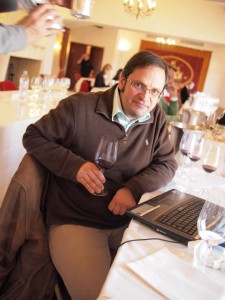
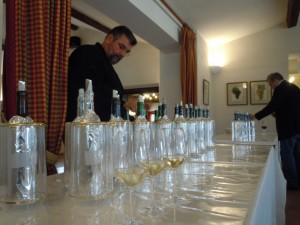
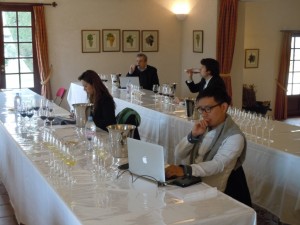

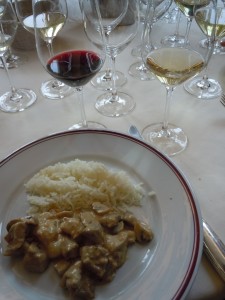

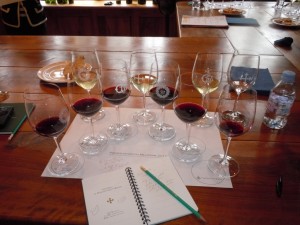

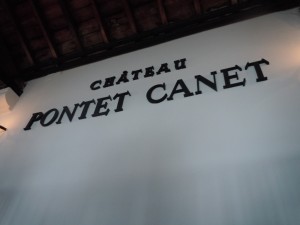
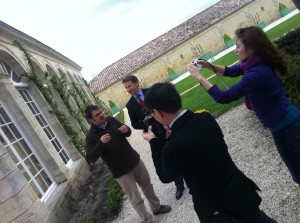

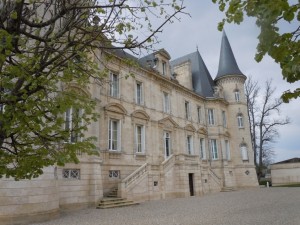

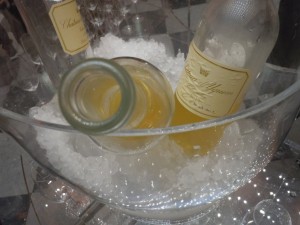
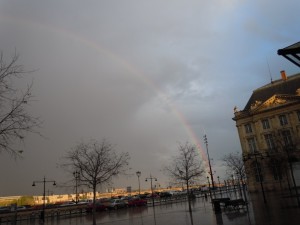
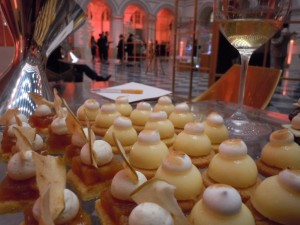
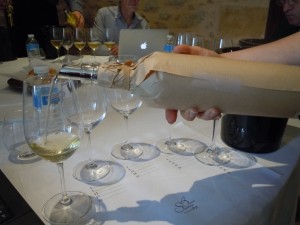
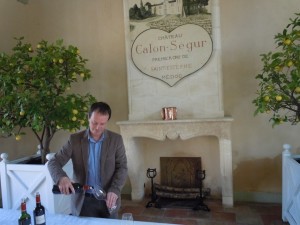
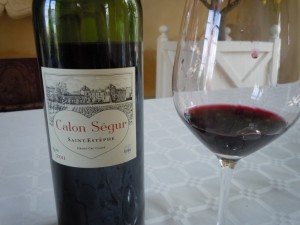
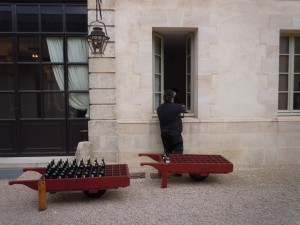
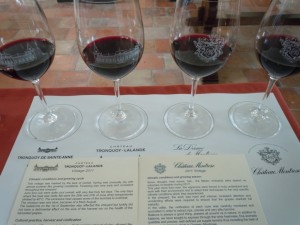
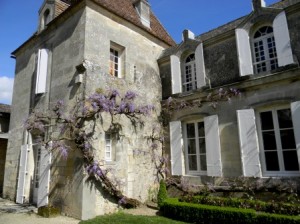
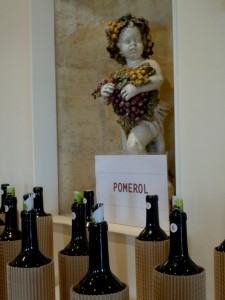



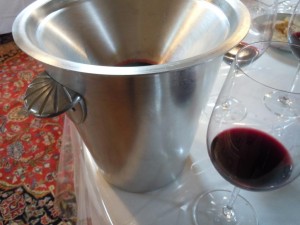


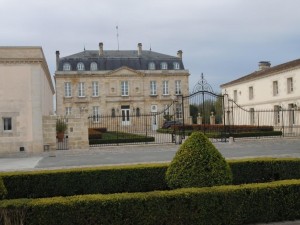
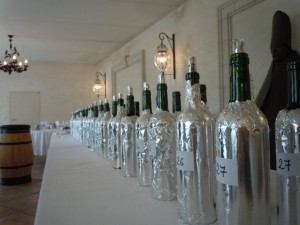



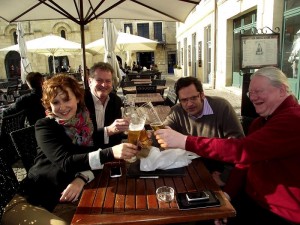




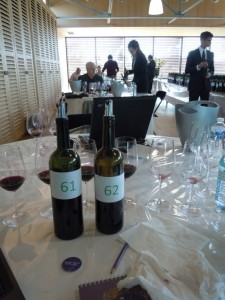
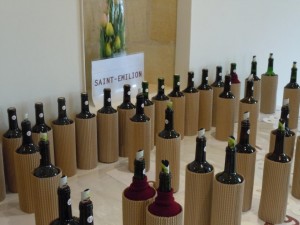
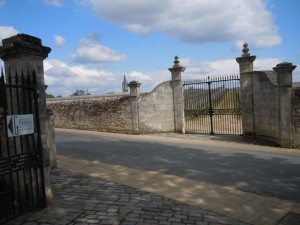

[…] For complete Bordeaux tasting notes from barrel 2011: click HERE. […]
[…] Panos Kakaviatos writes a fantastic post on En Primeur. J.J. Buckley, meanwhile, publishes an incredibly comprensive report on the wines. […]
Nice job, Panos. You have obviously done a ton of work. A few questions – how does this vintage stack up with the likes of 2008, 2001, 1999? Also, when you say ‘seashell freshness’ do you literally mean there are notes reminiscent of seashell, as one gets in Chablis? Thanks for the notes – I haven’t tasted 2011s yet so I am glad to have your notes. Cheers!
Alan
Hi Alan, thanks for reading. I think 1999 is a softer vintage, with less tannin, but more charm. This is on a general level of course. Take Margaux 1999. Rather soft and friendly, while the 2011 is more austere. Generalizing of course.
2001 is like 1999 but with more structure and length overall – a better vintage in general, and I would say – on balance – superior to 2011, although for the whites, it can be a closer call.
2008 strikes me as the most comparable among the vintages you mentioned to 2011. Some high points in different regions, some estates excelling, but marked by a certain roughness in the tannin, and some dryness, too.
By seashell freshness, I mean – in part – like the iodine one does get from Chablis, yes. I like that in my Bordeaux, too. But it is never as obvious as in Chablis, more a suggestion than an in-your-face maritime sea breeze that Chablis can impart. Too often, the high alcohol, big styled wines of Bordeaux lack that freshness. Because 2011 was by its nature relatively low in alcohol – compared to 2010 and 2009 – some estates beguiled with that seashell freshness, when they also managed to have smooth and ripe and juicy tannins. VCC, Pontet Canet, Calon Segur are three very good examples.
[…] century” in 2009-2010 and inaugurated three non vintages of the century in 2011-2012-2013. So based on my from barrel tastings back in 2012, I was not expecting much, and did not get […]